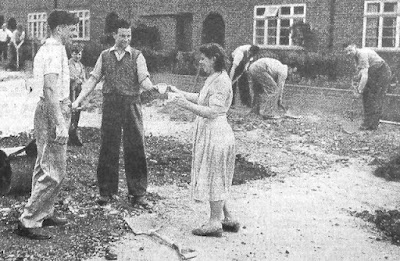 |
| Waiting for the Olympic Torch Relay in 2012; an excited throng along a quiet Hatfield Road. |
 |
| A busy Hatfield Road c1910, Fleetville, but not a motor vehicle in sight. |
 |
| The same view over 100 years later, with the print works building replaced by a supermarket. COURTESY GOOGLE STREETVIEW |
It would not be long before the number of vehicles of all kinds grew in number along this road, sufficient to encourage and then force us to walk along the footpaths, but it would be another twenty years from the first photo before such a path was laid on the south side – there were no shops here.





